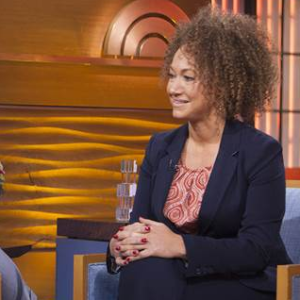If there is justice in the world, the case of Rachel Dolezal—who resigned from her leadership role at the NAACP after her claim to be half black was exposed as fraudulent—will give a big boost to Black No More, a satirical novel set in the 1930s, written by George Schuyler.
In that story, a doctor invents a skin-lightening method that makes blacks indistinguishable from whites. As blacks “pass” as white and avoid the stigma of dark skin, all hell breaks loose as the disappearance of a color line undercuts those organizations profiting from the “race issue.”
The main character is Max Disher, a black man who turns white, becoming “Matthew Fisher.” With blacks passing into whiteness, a Klan-like organization works to uncover who is “really” white. Acting as a National Association for the Advancement of White People, the group hires the charismatic Fisher to be its spokesman, not knowing that his parents were black.
In an effort to uncover racial identity, a genealogist traces the family trees of Americans and finds that almost all whites have nonwhite ancestry.
The book’s dedication highlights the idiocy of race purity: “This book is dedicated to all Caucasians . . . who can trace their ancestry back ten generations and confidently assert that there are no black leaves, twigs, limbs or branches on their family tree.”
Schuyler’s point was clear: we are so mixed over so many generations, it makes no sense to label ourselves white or black.
Which brings us to the tragicomic episode of Rachel Dolezal.
Both of her parents claim white European ancestry, but Dolezal has claimed biracial heritage. Whatever her reasons for doing so, she found that it brought her enhanced social status and job opportunities.
This episode had many wondering where the NAACP stood on the issue of racial identity.
Days before her resignation as president of the organization’s chapter in Spokane, Wash, the national headquarters released a press release affirming Dolezal’s accomplishments and stating that “one’s racial identity is not a qualifying criteria or disqualifying standard for NAACP leadership.”
What could be more clear and colorblind than the NAACP’s statement that race doesn’t matter?
Unfortunately, the twisted history of the organization shows how far it has deviated from its multiracial and colorblind roots.
In its early decades, the NAACP showed a strong committment to colorblind law as it fought in the courts to ensure that everyone was free of laws that discriminated on the basis of race. In 1917, Moorfield Storey, its first president (and a white man) won a Supreme Court case overturning laws that segregated neighborhoods.
In Brown v. Board (1954), black NAACP lawyer Thurgood Marshall asked the Supreme Court to declare the Constitution colorblind. Back then, white or black lawyers for the organization were committed to equal treatment “regardless of race.”
In the 1960s, the organization resisted formal racial classifications. General counsel Robert L. Carter wrote, “Color designations on birth certificates, marriage licenses and the like can serve no useful purpose whatsoever. If we are prepared to accept the basic postulate of our society—that race or color is an irrelevance,” then there was no need to label.
After the 1960s, however, the NAACP began to cling to a rigid racial category of black (or African American) while backing race preferences and resisting the addition of a “multiracial” option on the U.S. Census surveys.
These days the NAACP defends racial classifications it once reviled. “Black” or “African American” is a category available for self-identification that can land one a contract, a job, or a scholarship.
While the NAACP doesn’t have a racial litmus test for membership, its advocacy is all about dividing Americans by race, even though government categories constantly change. “Hispanics” were once “Spanish-speaking” or “Spanish-surnamed” Americans. But what if you were a Mexican American who didn’t speak Spanish? And what is a “Spanish surname,” and what does it prove if you have one?
Race, of course, eludes categorization. That is one reason why the NCAAP originally fought for individuals to be treated as individuals, and not as tokens of misleading racial categories.
Self-identification, the linchpin of the race industry, adds another problematic dimension. A biracial Obama self-identified as black and “passed” (although some NAACP leaders were reluctant to embrace him as such). Rachel Dolezal self-identified as black but failed to pass after her history came to light. She is “black no more.”
Dolezal was deceitful. But the greater deceit is the NAACP “passing” as colorblind when it helped recreate a world where skin color holds out something to gain.

